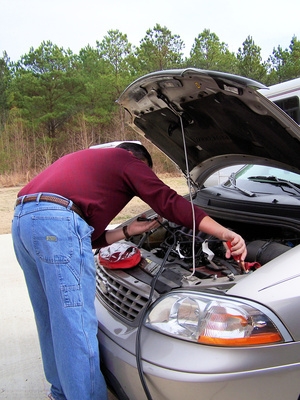
Have you ever wished you could plug a household appliance, such as a coffee maker, into your automobile? The problem is this: A passenger vehicle provides 12 volts of DC (direct current), which is fine for a car but not for a household electrical outlet. In order for a household electrical device to operate, it must be plugged into an outlet that provides 120 volts of AC (alternating current). Achieving this will require some modest expenditure as well as an allotment of time for installation of the necessary equipment. A basic knowledge of how your automobile battery is hooked up will be helpful in accomplishing this task.
Purchase an automotive power inverter, available from most automotive parts houses or truck stops. The power inverter converts the vehicle's 12 volt DC electric power to 110-120 volt AC (the standard electrical output of a household plug). Inverters are rated with a specific power output, designated in watts. Determine the power consumption of the device you'll be using with the inverter, and purchase an inverter with a output of at least that amount. The power consumption of most electrical devices can be found on a label attached to the device. It may be necessary to call the manufacturer of the product to determine the power usage of the device if it is not specified on a label. When purchasing the inverter, ask the sales person for any other items required for its installation, such as wire or other hardware. Be sure the read all of the instructions carefully before installing the inverter.
Install the inverter according to the instructions of the specific unit purchased, being careful to follow the sequence specified in the instructions.
Plug a small, low-wattage device into the converter and test that it is working properly.